Iran UNESCO World Heritage Sites
According to the UN cultural organization UNESCO, Iran is home to more than 20 World Heritage Sites with a highly rich history.
Some of these Iranian historical sites, like Persepolis, are among the most significant global cultural heritage sites and date back to the sixth century B.C.
List of 27 Iran UNESCO World Heritage Sites
Iran's cultural sites included in UNESCO are a part of the country's enormous wealth, which today has a particular place in the hearts of history aficionados everywhere. We list the Iran UNESCO World Heritage Sites in this article, together with the year of registration and a brief description of the monuments.
- Tchogha Zanbil (1979)
- Persepolis (1979)
- Naqsh-e Jahan Square , Isfahan (1979)
- Takht-e Soleyman (2003)
- Bam and Its Cultural Landscape (2004)
- Pasargadae (2004)
- Soltaniyeh (2005)
- Bisotun (2006)
- Armenian Monastic Ensembles of Iran (2008)
- Shushtar Historical Hydraulic System (2009)
- Sheikh Safi al-din Khānegāh and Shrine Ensemble in Ardabil (2010)
- Tabriz Historic Bazaar Complex (2010)
- The Persian Garden (2011)
- Masjed-e Jāmé of Isfahan (2012)
- Gonbad-e Qabus (2012)
- Golestan Palace (2013)
- Shahr-e Sukhteh (Burnt City) (2014)
- Susa (2015)
- Cultural Landscape of Maymand (2015)
- The Persian Qanat (2016)
- Lut Desert (2016)
- Historic City of Yazd (2017)
- Sassanid Archaeological Landscape of Fars Region (2018)
- Caspian Hyrcanian Forests (2019)
- Cultural Landscape of Hawraman/Uramanat (2021)
- Trans-Iranian Railway (2021)
- The Persian Caravanserai
1. Tchogha Zanbil (1979)
(Khamat, Khuzestan Province)
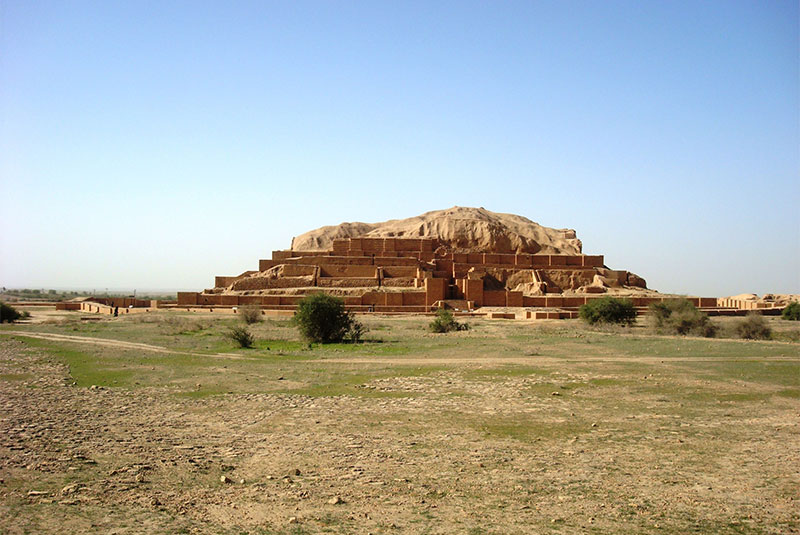
Tchogha Zanbil is the location of the sacred city of the Kingdom of Elam's remains, which are encircled by three enormous concentric walls. The city, constructed around 1250 B.C., was left incomplete after Ashurbanipal attacked it, as evidenced by the thousands of useless bricks left behind.
The Tchogha Zanbil Ziggurat, the first religious structure in Iran, had a total height of five stories and 52 meters, of which only two and a half levels survived. The priest and the royal family were the only users of the fifth floor, which was the highest floor and home to the Susa unique Gods.
This edifice was a gift to two Elamite Gods and was made of burned brick and mud brick. On the temple walls, we can see several bricks with the same inscriptions, carved in cuneiform characters, on which we can read the monarch's name and motivation for building the temple.
| Complete Article: Choqa Zanbil Ziggurat | An Ancient Wonder of the World
2. Persepolis (1979)
(Marvdasht, Fars Province)
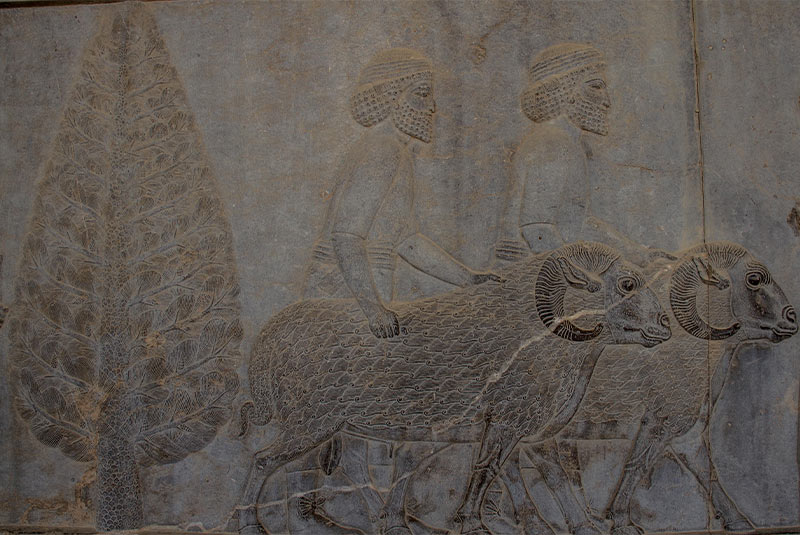
The construction of Takht-e Jamshid, also known as Persepolis, Parse, or Parse Polis, a vast complex with palaces, gates, kings' mausoleums, reliefs, and magnificent stairways, began in 518 BC and took 150 years to complete.
This ancient city, which was built on a stone terrace higher than the Marvdasht flatlands during the reigns of Darius I, Xerxes, and Artaxerxes I, was regarded as a stately and ceremonial capital for Achaemenians.
One of the greatest works of art and architecture in the history of the ancient world is Achaemenid architecture, also known as the art of unification and invention. The complex's palaces are made up of several significant components, including the entrance stairs, the Gate of All Nations, Apadana Palace (Royal Bar-e-am palace), the Tachar Palace (exclusive to the King), the Hadish Palace, the Hall of Tripylon (Triple Gate), the Palace of the Hundred Columns, an inadequate gateway, and mausoleums in the eastern section.
Here, different-colored limestones are set with no cement and simply with the aid of metal clamps. In addition to paying each employee a monthly salary, Achaemenian engaged a wide variety of individuals in constructing this enormous complex. Alexander burned a large portion of Persepolis when he set it on fire in 321 BC.
| Complete Article: Persepolis; The Great Ancient Persian Capital
3. Naqsh-e Jahan Square , Isfahan (1979)

The historical square of Naqsh-e Jahan is one of the world's largest, most beautiful, and most gorgeous squares. It was built in a park called Naqsh-e Jahan (associated with the Seljuk dynasty) in a rectangular location at Shah Abbas I's request. The second-largest square constructed in the Isfahani architectural style is this one. Calligraphy in Arabic and Farsi.
Shah Historical Mosque in the south, Sheikh Lotf Allah Mosque in the east, Ali Qapu Palace in the west, and Qeysarie Gate in the north of the plaza are four noteworthy architectural landmarks that were all constructed in the same period.
The square has served a variety of purposes throughout history, including constructing a Royal Palace, hosting ceremonies, military parades, ritually punishing criminals, etc. which relates to political implications; having two significant mosques on either side, hosting ceremonies and rituals in the square when Emam Mosque was too small for them; and serving as a marketplace.
Lastly, we may discuss Naghsh-e Jahan's recreational activities as it has developed into a hub for fireworks, polo, Qapun Andazi, festivals and public holidays, theatre, puppetry, narration, and acrobatics.
| Complete Article: Naghsh-e Jahan Square
4. Takht-e Soleyman (2003)
(West Azerbaijan Province)
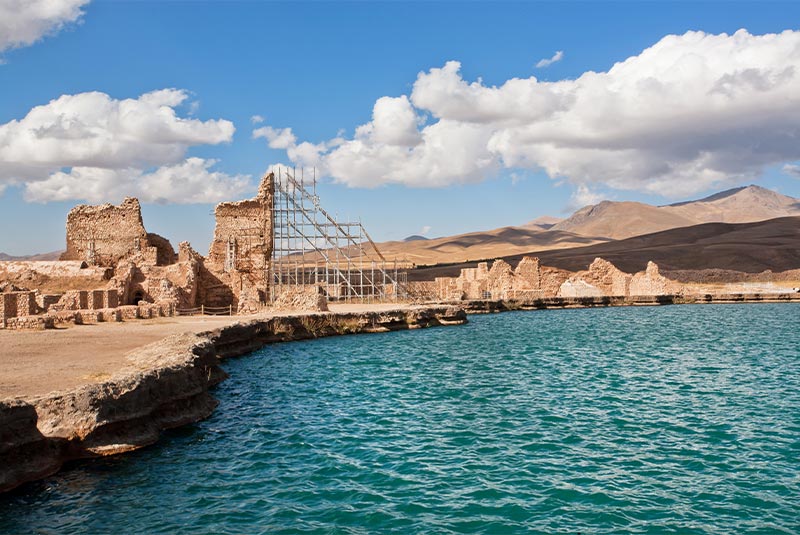
The Takht-e Soleyman archaeological site is located in a valley inside a volcanic mountain range in northwest Iran. The main Zoroastrian shrine, which was partially reconstructed during the Ilkhanid (Mongol) period (13th century), is located at the site, along with an Anahita-dedicated temple from the Sasanian period (6th and 7th centuries). The location has significant symbolic value. The layout, palace, and fire temple designs significantly impacted how Islamic architecture evolved.
There are several natural settings here in addition to the historical ruins of the Azargoshtasp fire temple, which are situated inside an oval wall, surrounding a supernatural lake with a depth of 12 m in the heart of the complex, and 38 towers on the natural rocky plates built from the lake's deposits. The monument looks unusual and lovely due to the massive bricks and intricately cut stones utilized in its creation.
| Complete Article: Takht-e Soleyman | The Holy Shrine of Zoroastrianism
5. Bam and Its Cultural Landscape (2004)
(Bam City, Kerman Province)
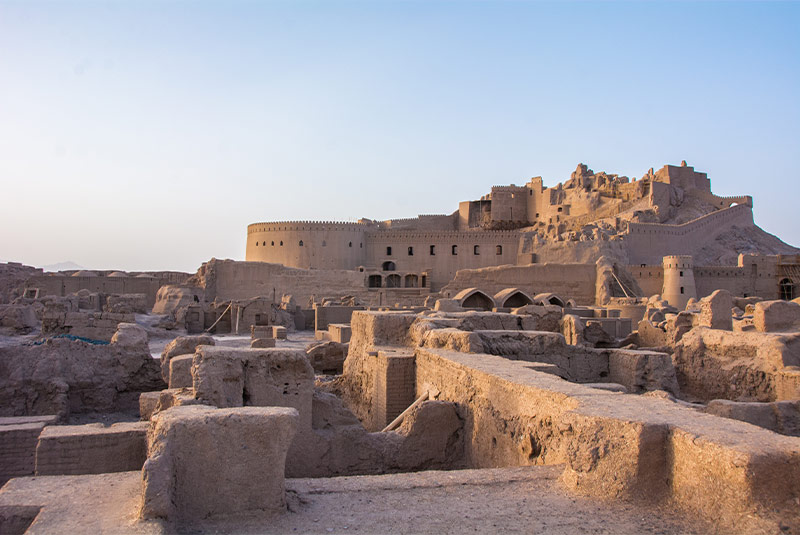
One of the best Iran UNESCO World Heritage Sites, the main Arg (castle) of Arg-e-Bam, and the most extensive mudbrick complex in the world, is situated in the highest sector of the enormous fort; yet, the name "Arg-e Bam" refers to the whole structure.
Bam City and its Arg was one of the oldest military forts built along the Silk Road. Although it was still inhabited as a residential sector as late as the Qajar dynasty, other narrations place the beginnings of this Bam complex in the Achaemenid Empire or Parthian ages.
The primary building materials in this location are palm tree trunks, mud brick, clay, and rare stone. The historic Arg-e-Bam is made up of a variety of architectural features, such as a ditch, fence, numerous forts and gates, a mosque, a bazaar, a fire temple, an inn, a school, a bathhouse, a prison, a gym, aristocratic or public residential areas (interlining houses), the royal domain, which included soldier's homes, stables, and mills, as well as the homes of army commanders and ruler (the drinking water of Arg inhabitants was supplied from the wells in the yard of their houses).
This remarkable complex was severely damaged in the 2003 earthquake and is currently being restored and rebuilt in collaboration with various nations, including Japan, Italy, and France.
| Complete Article: Arg-e Bam | The Fascinating Citadel of Ancient Persia
6. Pasargadae (2004)
(Shiraz City, Fars Province)
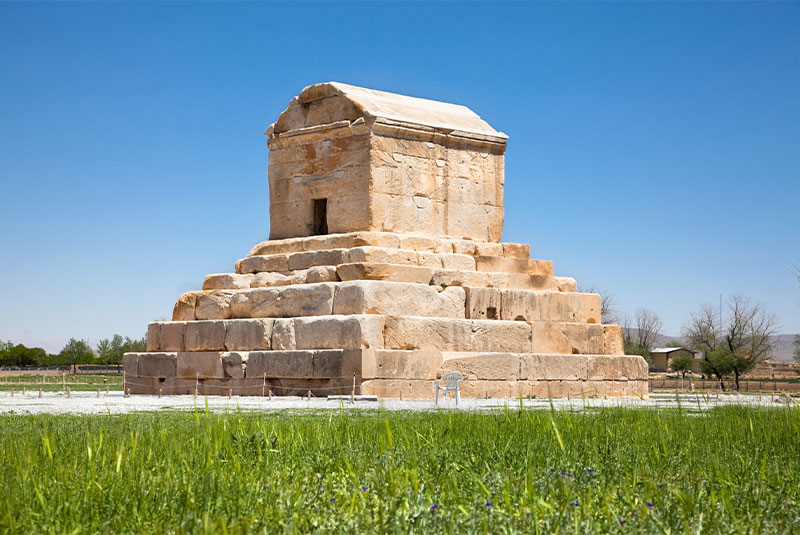
The Pasargadae Complex is an old location with several monuments that are still standing from the first capital of the Achaemenid Empire (sixth century BC) in Iran, which was founded by Cyrus the Great and was situated in the valley of the Polvar River.
Its palaces, gardens, and the tomb of Cyrus are excellent representations of the first stage of royal Achaemenid art and architecture, as well as notable specimens of Persian civilization. The Mausoleum of Cyrus II, Tall-e Takht, a fortified terrace, and a royal ensemble with a gatehouse, audience hall, residential palace, and gardens are three particularly remarkable relics in the 160-ha complex.
A unique example of Iranian civilization, Pasargadae is a historic complex made of materials like stone, brick, mud brick, and wood that represents the first stage of the thriving and development of architecture, sculpture, painting, and mimicry arts in the Achaemenid era and is thought to have served as a model for Persepolis.
It is regarded as the first empire to value the cultural variety of its many populations. A composite depiction of several cultures, Achaemenid architecture, mirrored this.
| Complete Article: Pasargadae | The Capital City & the Tomb of Cyrus the Great
7. Soltaniyeh (2005)
(Zanjan Province)

In the Mongol-founded Ilkhanid dynasty's capital city of Soltaniyeh, built-in 1302–12, the tomb of Oljaytu was built. Soltaniyeh, located in the province of Zanjan, is a prominent example of Persian architecture's accomplishments and a significant building in the growth of its Islamic architecture.
The ground level, first floor, and adjacent compartments have a semi-rectangular floor plan, while the second and third floors have an octagonal floor plan, on which the dome is supported in a hemispherical form. Eight minarets have been planned to be positioned on the octagonal building's angles above the third level. The structure had a basement, a Torbat Khaneh, eight entrances, eight porches, eight minarets, and a dome.
Scholars like A.U. Pope has said that the mausoleum's interior ornamentation is exceptional and that it "anticipates the Taj Mahal."
The many architectural ornaments of Soltaniyeh include wall paintings, lattice brickworks, wooden and stone ornamentation, plaster and brick muqarnas, and certain Qur'anic inscriptions.
| Complete Article: Dome of Soltaniyeh
8. Bisotun (2006)
(Bisotun District, in Harsin County, Kermanshah Province)
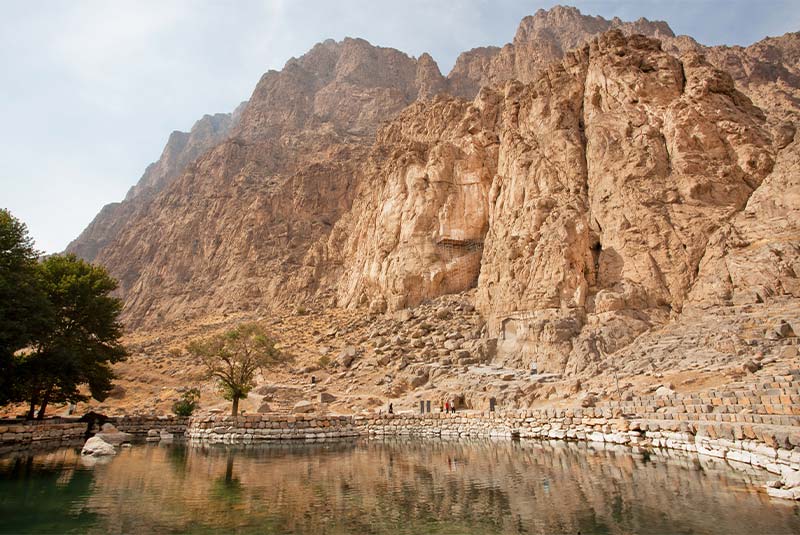
With a continuous archeological sequence spanning from prehistory to the 20th century AD, the Bisotun, in the list of Iran UNESCO World Heritage Sites, was a well-known location in the history of ancient Iran and southwest Asia. The Bisotun Inscription is the largest, most famous, and oldest known Iranian inscription. It was carved on limestone on the Bisotun hillside (southern hillside of Peřaw Mountain).
The lead layer and traces of a brown glaze in the initial lines of the inscription appear to be remnants of an earlier coating that was applied to boost durability. In addition to its religious significance, Bisotun Mountain is situated along an old trade route that connects western and central Iran with Mesopotamia, making it quite visible to the public at large.
The Bisotun inscription, which is written in three languages—Akkadian, Elamite, and ancient Persian—describes Darius I the Great's triumph over Gaumata, the Median Magus, and rebellions as well as the restoration of the empire in his own words.
The most significant parts of Darius I the Great's statements on the Bisotun inscription are as follows: presenting Darius I and the extent of his empire, the story of the Gaumata riot and his murders, the story of suppressing different uprisings in Elam, Babylonia, Medes, Parthia, Persia, Armenia, and Marv lands, highlighting the truth of the record, being Darius free from guilt and crime, asking the inscription to be kept, blessings for the observers, and a curse for the destructors.
| Complete Article: Bisotun | The Ancient Complex in Western Iran
9. Armenian Monastic Ensembles of Iran (2008)
(West and East Azerbaijan provinces in Iran)

The Dare Sham small village, a few surrounding structures, and the Complex of Armenian Churches are the components of the cultural interchange between Iranian and Orthodox Byzantine cultures. These churches, which are still in good shape, are situated at the southernmost point of the Armenian cultural region and serve as the focal point for spreading Armenian culture in Iran and Azerbaijan.
The first church is QaraKlisa (Tad-eous), which is one of the most inventive and elaborately designed among Armenian churches. It is made up of two old black portions and one modern white section. The St. Tad-eus Church was built atop the St. Tad-eus Mausoleum during the fourth and sixth centuries, and it is well admired by both local Christians and Armenians worldwide.
The second-most significant Armenian church in Iran, after Qara Klisa, is Saint Stepanos. This church, which dates back to the 10th and 12th centuries AD and is today situated in the middle of mountains in a lush natural setting, is highly respectful of all religions. Indeed, the church is a part of the Armenian branch of the Gregory church. The third most well-known church in Iran is called the Chapel of Dzordzor (The Chapel of the Holy Mother of God), and it is an Armenian church. Built-in 1298 AD, this church has a cross-like design.
Due to its Armenian population and unique customs, Dareh Sham village has also been included in the list of Iran's Armenian churches. The Holy Dareh Sham Church is near the Armenian cemetery, St. Sarkis Church is in the center of Dareh Sham, St. George Church is in the upper Dareh Sham, and Shepherd Church is on the route from Jolfa to Dareh Sham. There are eight churches and holy sites in the region.
| Discover: Qara Kelisa, The Armenian Monastic Ensembles of Iran
10. Shushtar Historical Hydraulic System (2009)

In the neighborhood of the Shushtar historical area, under the Sassanid Empire, was built the Shushtar hydraulic system, one of the oldest engineering marvels in Iran and the whole globe.
In order to make the most use of water power as the engine driving industrial mills, a complex network of mills, waterfalls, bridges, dams, channels, enormous water transmission tunnels, and Sika (a recreation area) work together.
The system delivers Karun water to every area of Shushtar and the nearby cities. All of the waterfall and mill sections were constructed using granite and lime mortar, and the carved stones and river stone walls were used to build the nesting chambers.
The Gargar Dam, a Sasanid-era engineering marvel that was entirely hand-dug, serves as the foundation for the Shushtar Complex's construction process. The dam elevates the water level by obstructing river flow, which is then used for dewatering three rock-cut tunnels. Water is channeled through three tunnels, spinning the mills' wheels as it flows into a pool-like region resembling a cascade.
| Complete Article: Shushtar Historical Hydraulic System
11. Sheikh Safi al-din Khānegāh and Shrine Ensemble in Ardabil (2010)
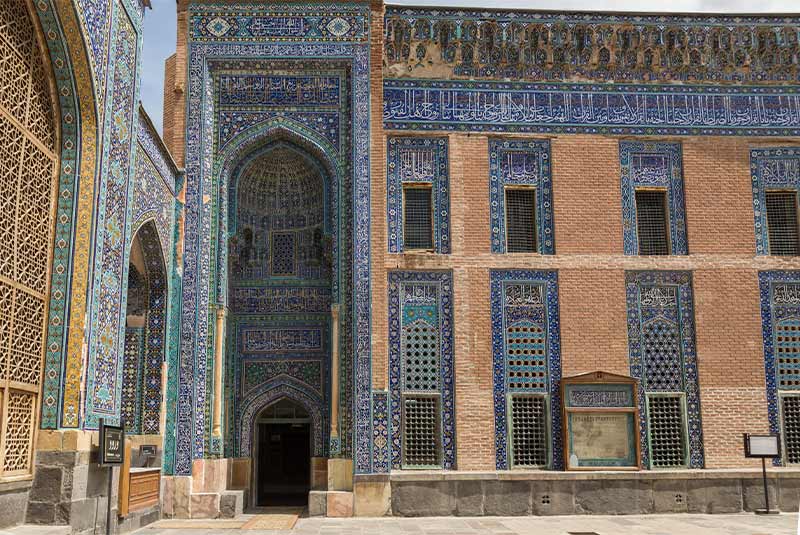
This Sufi sanctuary was built between the early 16th and the late 18th centuries, making the most of the space available by integrating Iranian traditional architectural characteristics to suit a variety of purposes (including a library, a mosque, a school, Mausolea, a cistern, a hospital, kitchens, and a bakery).
There are eight gates representing the eight Sufi attitudes, and a route leading to the Sheikh's shrine that is separated into seven portions representing the seven stages of Sufi mysticism. Along with outstanding collections of historical relics, the ensemble also includes beautifully maintained exteriors and ornately decorated interiors. It is a unique collection of medieval Islamic architectural components.
This one was among the few ancient cities where women were financially in charge of their households. The name of the place derives from frequent conflagrations as well as from the direction change of the Hirmand River and the ongoing droughts that followed it.
| Full Guide: Sheikh Safi al-Din Khanegah and Shrine Ensemble
12. Tabriz Historic Bazaar Complex (2010)
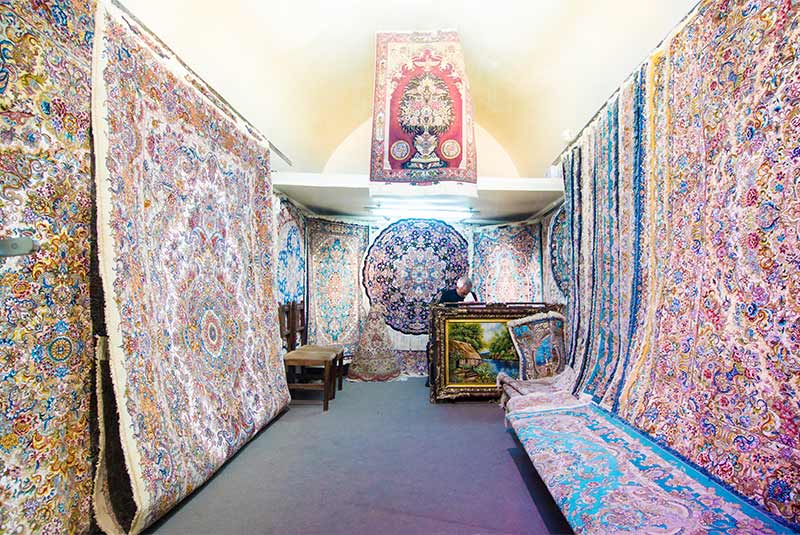
Since ancient times, Tabriz has been a hub for cultural interchange, and the historic bazaar complex is one of the most significant Silk Road hubs for trade. The Tabriz Historic Bazaar Complex comprises several linked, covered brick buildings, enclosed areas, and constructions for various purposes.
When Tabriz, in the region of Eastern Azerbaijan, was chosen to serve as the Safavid kingdom's capital city in the 13th century, the town and its Bazaar were already well-off and well-known. Although the city lost its prominence as the nation's capital in the 16th century, it continued to play a significant role as a commercial center to the end of the 18th century as Ottoman dominance increased. It is among the most detailed representations of Iran's historical economic and cultural structure.
| Full Guide: Tabriz Bazaar Complex | The Largest Covered Bazaar in Iran
13. The Persian Garden (2011)
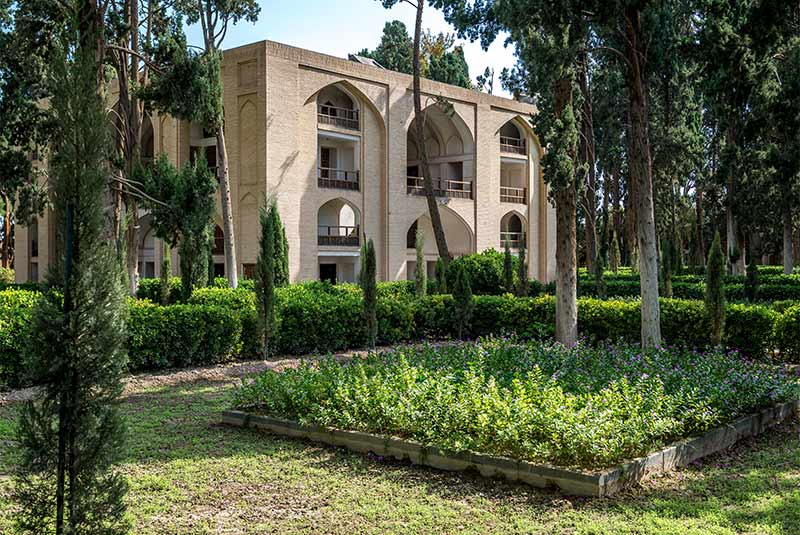
The Iran UNESCO World Heritage Site's Persian Garden includes nine gardens. They serve as an example of the variety of Persian garden designs that have developed and changed to accommodate various climatic conditions while preserving fundamental ideas that date back to Cyrus the Great's reign in the sixth century BC. The Persian garden was designed to represent Eden and the four Zoroastrian elements of heaven, earth, water, and plants. The Persian garden was always split into four sections, with water playing a significant role in both irrigation and adornment. These gardens, which have been there since the 6th century BC, also have structures like walls, pavilions, and houses, in addition to complex irrigation systems. They have impacted landscape design in places like Spain and India.
The nine Persian Gardens listed by Iran as UNESCO World Heritage Sites are:
- Pasargadae garden in Shiraz (The mother of Persian gardens, built in 6th century BC, and related to Cyrus the great)
- Eram garden of Shiraz (Built in Seljuk era)
- Chehel Sotun garden of Isfahan, the royal garden (Safavid era)
- Fin garden of Kashan (Safavid period)
- Mahan garden of Kerman (Late Qajar period)
- Akbarieh garden of Birjand (Late Zandieh and early Qajar period)
- Dolat Abad garden of Yazd (Late Afsharid era)
- Pahlevan pour garden of Mehriz (Late Qajar dynasty)
- Abbas Abad garden (Safavid period)
| Full Guide: Persian Garden | A Piece of Paradise in Iran
14. Masjed-e Jāmé of Isfahan (2012)
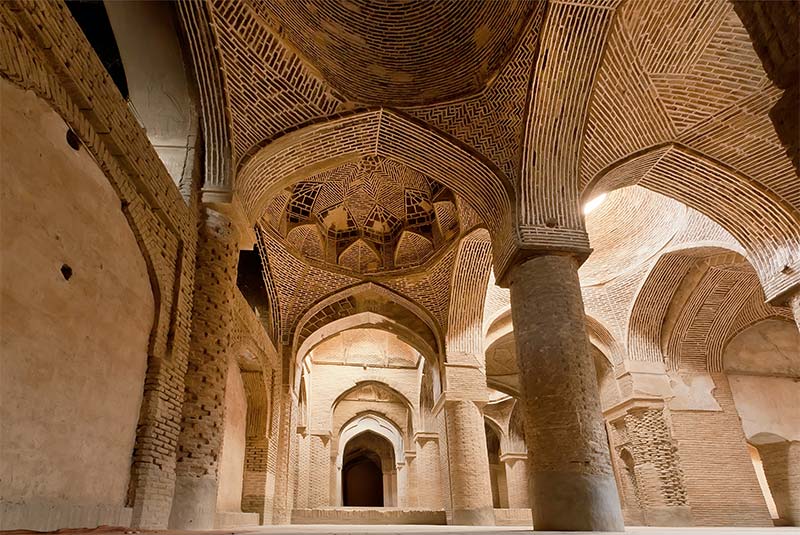
Masjed-e Jamé of Isfahan is a majestic and elegant, aesthetically and technically significant structure, embracing numerous eras of Islamic architectural development. It is regarded as one of the most important and the first religious buildings in Iran's UNESCO World Heritage Sites, and one of the Muslim world's biggest and most enigmatic mosques. The mosque's main structure was constructed in the early Islamic period following the model of a late Sassanid monument.
The mosque's present facade dates back to the Seljuk era, but the Safavid and Buyid dynasties were responsible for most of its building work. The Masjed-e Jamé in Isfahan is a typical Islamic edifice designed with a four-Iwan layout that references Byzantium and Classical art.
The mosque is divided into various areas, including a courtyard with four Iwans, a Shabestan, a Mozaffari school, a few Daylamites-era terraces, the Nezamolmolk dome, the Taj al-Mulk dome, the Oljeitu altar (the most beautiful stucco altar), the most wonderful carved pulpit, and four porches known as Saheb, Ostad, Shagerd, and Darvish Iwans The mosque has several entrances that connect its interior areas to the surroundings. This extraordinary work of art has various architectural and decorative styles as well as several exquisite inscriptions in Arabic and Farsi calligraphy.
| Complete Article: Masjed-e Jame of Isfahan
15. Gonbad-e Qabus (2012)
(Golestan Province)
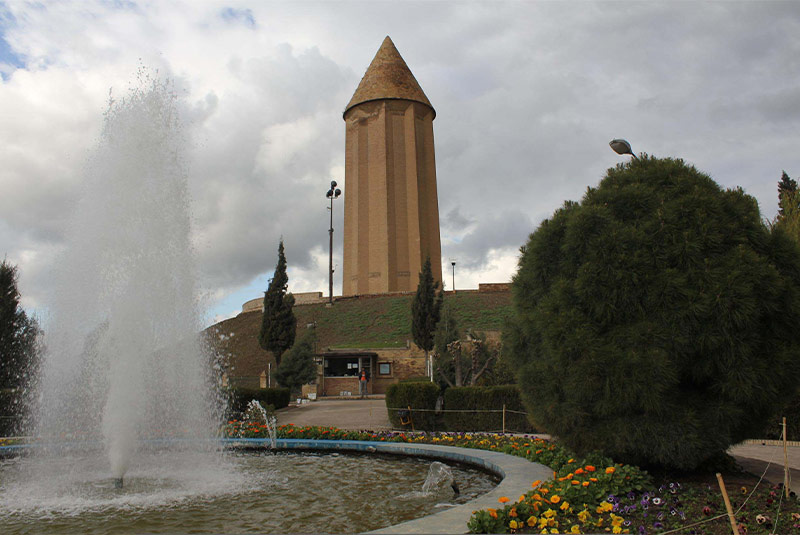
One of the finest examples of Persian architecture from the fourth century AD in the list of Iran's UNESCO World Heritage Sites is the ancient tower of Gonbad-e Qabus. Despite the tower's sparse use of decorative features, it is reinforced symmetrically. The tower, which stood 15 meters above the earth and was built in 375 Solar Hijri under the reign of Qabus-ibn Wushmgir, is the highest brick structure in the world. The Razi technique was used to create the building's architecture, which was constructed out of brick and plaster. Red bricks that seem golden in the reflection of sunlight make up the body of the structure.
The base of the edifice and its body with a star-shaped conical dome are both components of the Gonbad-e-Qabus. The industrial and architectural marvel of this work of art is the conical dome of the structure. The tower's construction improvised an opening on the east side and a gate on the south side. A stalactite that appears to be in the beginning stages of such architectural and stucco embellishment may be seen in the archway of the entry gate. The outside body of the structure has been encircled with two rows of Kufic lettering that are supposed to resemble a belt.
One row of these inscriptions is found eight meters above the ground, while another row is found under the conical dome. Both rows are made of brick and are constructed in a basic pattern without any relief, and they are ornamented with intelligible phrases within a brick frame.
| Full Guide: Gonbad-e Qabus Tower | The Remaining Evidence of Jorjan
16. Golestan Palace (2013)
(Tehran City, Iran)
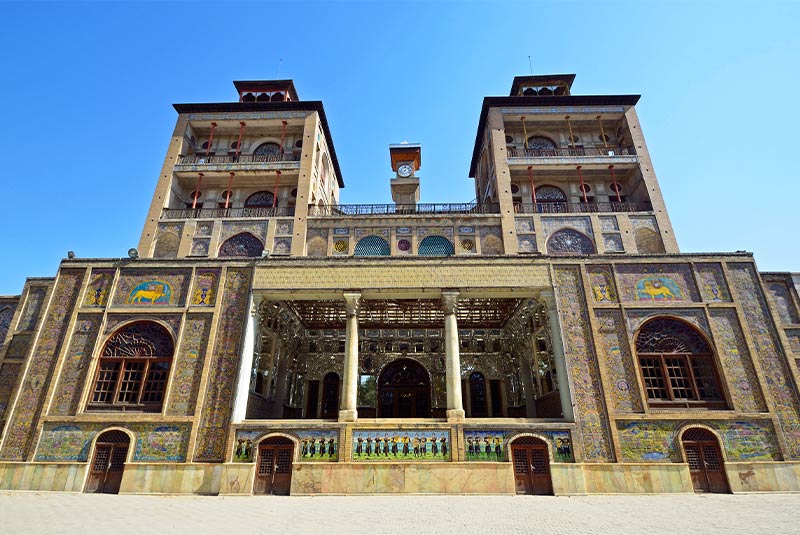
One of the most well-known Iran UNESCO World Heritage Sites, Golestan Palace, was built at various historical points and for multiple purposes. The Golestan Hall, which is a part of the external building, is where the name came from. This complex's development began during the Safavid dynasty. Shah Abbas I erected the royal structure there and built Chahar Bagh and Chenarestan in the north of the complex, but little is left there now.
The Marble Throne Iwan (Iwan-e Takht-e Marmar) and Khalvat-e Karimkhani, which date back to the Karim khan Zand era, are the two oldest structures in the Golestan palace. The palace was expanded mainly during the Qajar era and served as the Qajar monarch's home.
Many of Tehran's Arg, including its fences, Bab-e-Ali entrance gate, the Ministry of Finance, gallery, Tekye Dolat, Narenjestan, Golshan garden, and inner buildings, were destroyed after the Pahlavi I dynasty's conquest. As a result, this palace became a venue for official ceremonies and served as a residence for presidents and foreign dignitaries.
The following structures with a variety of artistic features and beautiful architectural ornaments can currently be seen in the palace: the Marble Throne Iwan, Khalvat-e Karimkhani, Museum room (Salam hall) and its Hoz Khaneh (a pool House), Mirror hall, Ivory hall or traditional eateries, Brillian or ceremonial hall, library, Shams-ol Emareh edifice, Wind Tower Edifice and it's vast Hoz Khaneh,
Each component now has a new role to play, including administrative offices, a library, and places to house the royal remains and ethnographic museums.
| Complete Article: Golestan Palace
17. Shahr-e Sukhteh (Burnt City) (2014)
(Sistan and Baluchestan Province)
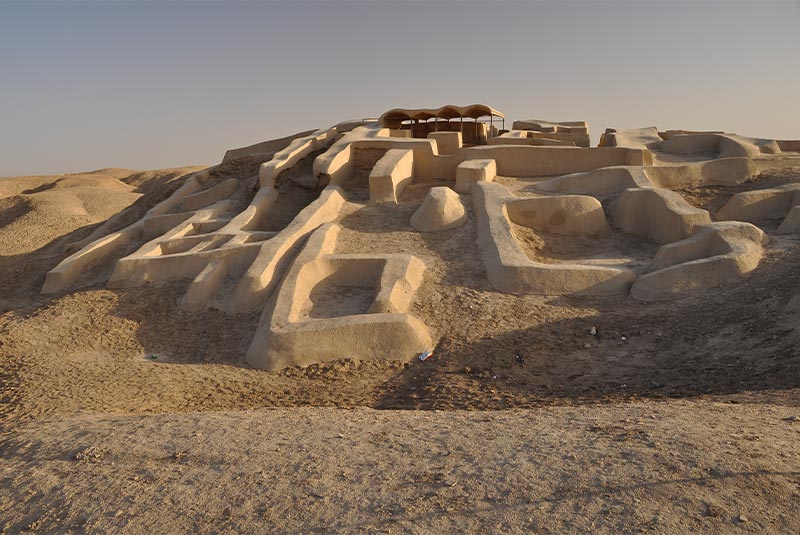
One of the greatest on the list of Iran's UNESCO World Heritage Sites is Shahr-e Sukhteh, which translates to "Burnt City". It is situated where ancient trade routes that span the Iranian plateau meet. The mudbrick city's ruins reflect the beginning of eastern Iran's earliest sophisticated societies. The city was established circa 3200 BC, and from that time until 1800 BC, it was inhabited throughout four significant eras. During this time, various unique districts inside the city evolved, including those where monuments were created and separate quarters for residence, burial, and manufacturing.
The city was eventually abandoned in the early second millennium due to changes in water routes and climate. This site is a rich source of information about the emergence of complex societies and connections between them in the third millennium BC due to the structures, burial grounds, and an extensive collection of essential artifacts unearthed there and their well-preserved state as a result of the desert climate.
| Full Guide: Shahr-e Sukhte | The Beginning of Civilization in 3200 BC
18. Susa (2015)
(Ahwaz City, Khozestan Province)
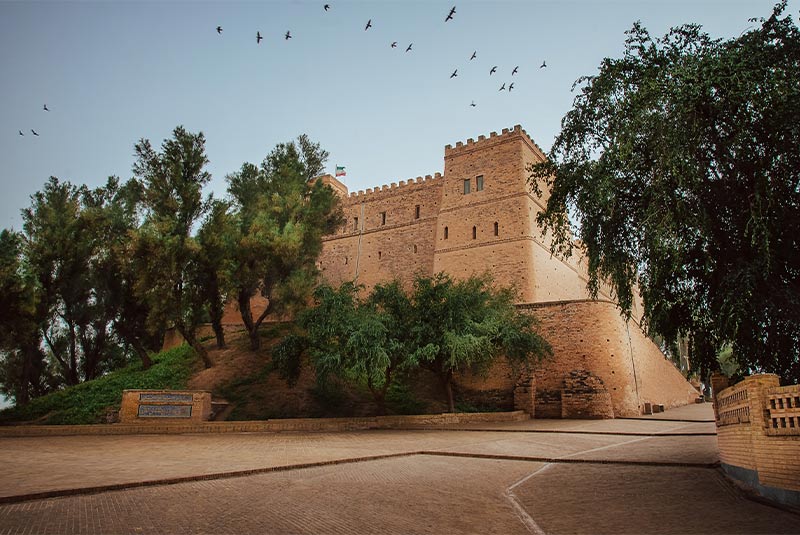
The many architectural ornaments of Soltaniyeh include wall paintings, lattice brickworks, wooden and stone ornamentation, plaster and brick muqarnas, and certain Qur'anic inscriptions.
The Susa ancient site is made up of a sizable area with various monuments and architectural structures dating from prehistoric to the Islamic era, making this place an attractive one on the Iran UNESCO World Heritage Sites list. These structures include the Shavoor palace, Apadana (one of the world's most impressive and unique sites), the Eastern gate, Hadish, the Fifteenth City, the Achaemenid village, Masjed-e Jamé of Susa, many Islamic buildings, Acropolis hill, and French castle.
The location provides an excellent testament to the long-gone Elamite, Persian, and Parthian cultural traditions.
| Full Guide: Susa Persia; One of the Oldest Cities in the World
19. Cultural Landscape of Maymand (2015)
(Shahr-e Babak City, Kerman Province)
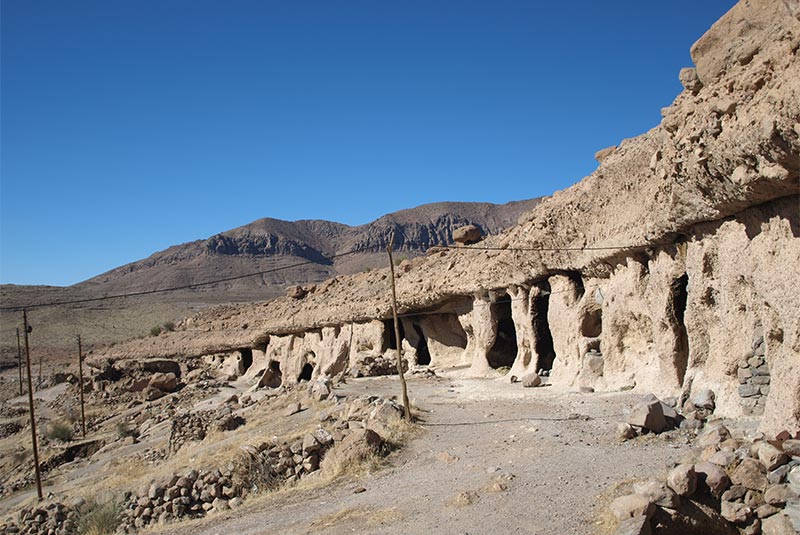
One of the leading human habitats in Iran, Maymand is a mountainous and dugout settlement with a 2–3 thousand-year-old history. The close connection between human life and the natural environment is one of the distinctive values of this historic village, which explains why it still maintains its original status as a location and maintains its original appearance without actually modifying the environment, even today and despite new technological advancements.
In Meymand, every dugout home with one or more rooms and stables is referred to as a Kicheh. The number and size of rooms vary among Kichehs, each with a unique construction. In Meymand homes, the rooms have also been divided from the house's rear (Pastoo), and occasionally, niches are covered with specific types of fabric curtains.
The ancient system with a Khazaneh and the emphasis on hygienic conditions make Maymand bathrooms particularly remarkable. This old community also has mosques, schools, a Hussaynia, and a caravanserai. The Sassanid Pahlavi language is still present in the village's language, customs, and terms.
People reside on Maymand's lower plains for the first four months of the year so they can graze their animals there. In the second four months of the year, they travel to the nearby villages, farms, and gardens to reside there. In the third four months of the year, they choose to stay in the dugout dwellings at the base of the mountains to escape the chilly winter. Due to their architectural design, these homes are cool during the summer and warm during the winter.
| Complete Article: Meymand Rocky Village | A Photographer's Dream
20. The Persian Qanat (2016)
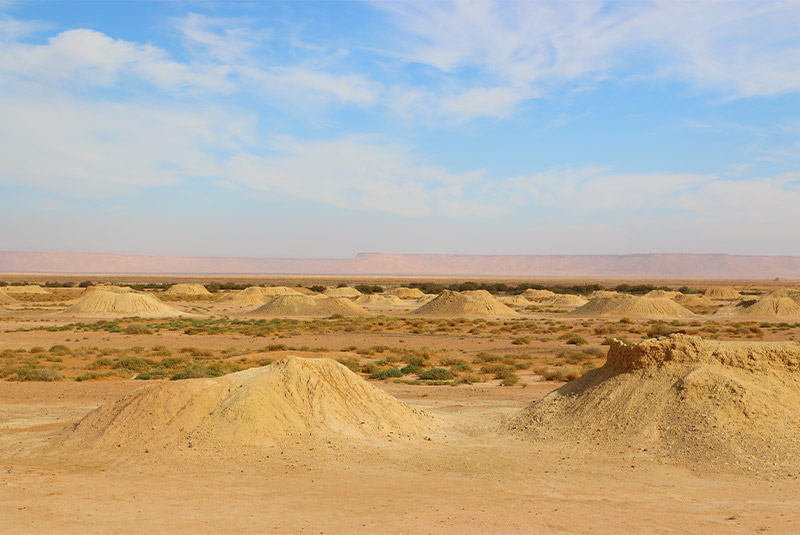
Agriculture and permanent settlements are supplied across Iran's arid areas by the antiquated Qanat system, which involves drawing water from alluvial aquifers at valley crests and moving it via subsurface tubes by gravity for distances that can be many kilometers. This system's eleven Qanats feature watermills, rest spaces for employees, and water reservoirs. Water may be shared and distributed equitably and sustainably thanks to the traditional communal management system that is still in use. The Qanats offer extraordinary evidence of cultural practices and civilizations in dry, desert regions.
They are situated throughout six provinces and, as a result of their unique technology, antiquity, unique architecture, length, and other qualities, have been recorded as Iran's UNESCO World Heritage Sites:
- Ebrahim Abad Qanat (Arak City, Markazi province)
- Qasabeh Qanat (Gonabad city, Khorasan Razavi province)
- Goharriz Qanat ( Jupar City, Kerman Province)
- Zarch Qanat (Yazd City, Yazd Province)
- Akbar Abad and Qasem Abad Qanat ( Baravat, Kerman province)
- Hasan Abad Qanat ( Mehriz City, Yazd Province)
- Vazvan Qanat ( Vazvan city, Isfahan Province)
- Moon Qanat (Ardestan City, Isfahan Province)
- Baladeh Qanat (Ferdows City, South Khorasan Province)
- Ghasem Abad (Ray County, Tehran Province)
- Mozd Abad (Meymeh City, Isfahan Province)
| Complete Article: Qanat, Underground Water Channel
21. Lut Desert (2016)
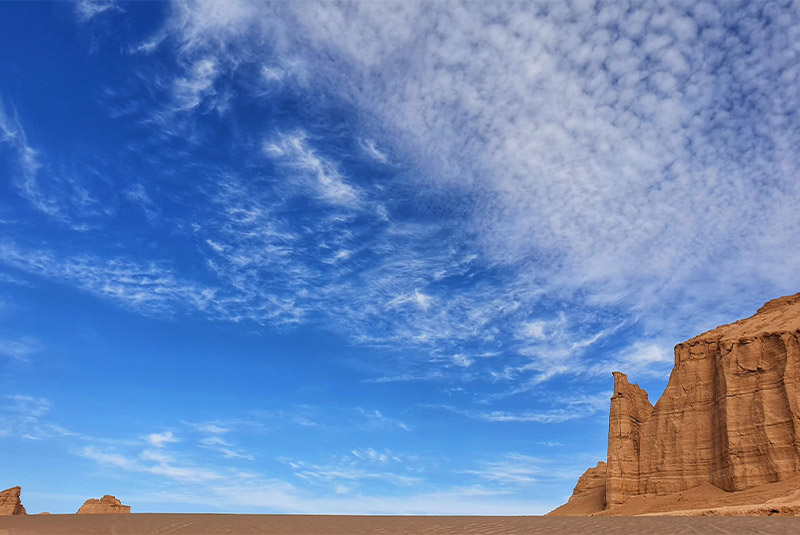
Due to their resemblances, "Dasht-e Kavir" and "Kavir-e Lut" are frequently confused with one another. The Lut Desert is the first vast desert in southeast Iran and one of the world's most scorching, arid deserts. It spans three provinces: south Khorasan, Sistan & Baluchestan, and Kerman, and covers about 10% of Iran's total area. It had a temperature of 70 degrees Celsius in 2005, making it the planet's hottest place as well as the planet's hottest spot overall.
The Lut desert and its surroundings exhibit a vast natural landscape with great promise and realized values resulting from natural phenomena. These phenomena include the highest observed Yardangs on Earth, the highest sand dunes and Nebkha dune fields, huge erosional ditches, Hydrologic networks, tectonic holes, rare salt phenomena, vast stony desert pavements (Hamada), Qanats, historical areas, and villages, and a historic civilization laid in the desert.
| Full Guide: Lut Desert | The Hottest Place on Earth
22. Historic City of Yazd (2017)

The historic city of Yazd is a vast, ancient territory with a history that dates back thousands of years. It is regarded as Iran's most comprehensive, organized, and authentic historical zone and the second-largest inhabited adobe area in the world.
One of the most defining characteristics of Yazd's distinctive architecture that makes it suitable for the dry and hot arid climate of the desert is indeed the extent, integrity, and preservation of the historical originality aspects of the city, as well as the use of native local materials and consumption of the least amount of energy in the construction of adobe buildings.
Yazd City is home to several tourists and historical, natural, and cultural landmarks, elevating it to the top of Iran's and the world's list of top tourist attractions. The most notable visible aspects of Yazd's ancient city are its historical architecture, windcatchers, Qanat system, traditional and adobe lanes and homes, minarets, and domes. Other distinctive characteristics of this ancient city include its proximity to the Silk Road, historical structures, reservoir, Hammams, baths, bazaars, mosques, Tekyehs, jails, Hussainiyas, temples, old gardens, Zoroastrian temples, museums, and so on.
| Discover: Yazd Travel Guide | Travel to Yazd
23. Sassanid Archaeological Landscape of Fars Region (2018)
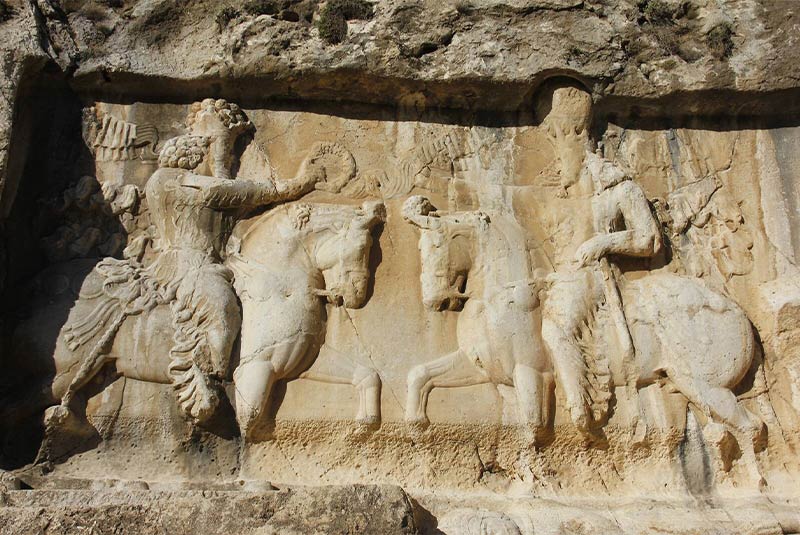
Palaces, forts, and reliefs from the Sassanid empire (224–658 AD) are all included in the Sassanid Archaeological Landscape of Fars Region, which is spread out over the historical regions of Firouz Abad, Bishapur, and Sarvestan. These monuments are the most valuable in terms of architectural and urban advancement.
Here, we can see various magnificent examples of architectural embellishments, such as the Iwan building, the first dome to be built utilizing adobe and ballast stone carcass, Sarooj mortar, and stone carving. Art was employed in the Fars region's Sassanid archaeological environment in existing monuments.
In the Sassanid archaeological environment of the Fars area, the Iwan building, the earliest examples of dome construction on triangular-shaped monuments, the use of adobe and corpses of rock with a mortar, and the art of stone carving were at the height of their artistic phases.
It is abundantly clear that various Achaemenid and Parthian cultural patterns and buildings, as well as Roman art, have had a significant influence on the architectural and artistic style of the Islamic era in this collection, in addition to Sassanid traditions.
24. Caspian Hyrcanian Forests (2019)
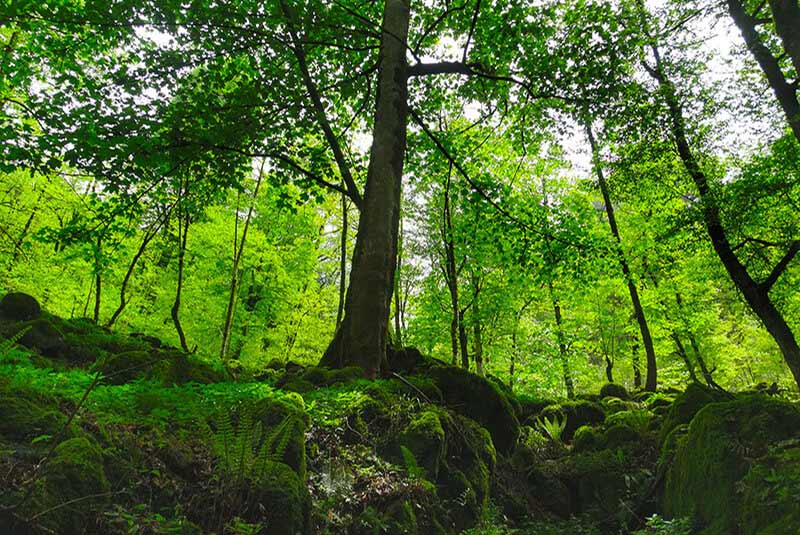
Hyrcanian forests are distinctive forested highlands along the southern coast of the Caspian Sea that are related to the Triassic period and were preserved from Cenozoic geology and the Ice Age as a result of the northern temperate climate in the area. They were listed as the second Iranian forests and wildlife on the UNESCO World Heritage List.
The Hyrcanian forests have been expanded in some areas of five provinces, including Semnan, Golestan, Gilan, Mazandaran, and North Khorasan, covering an area of 1.9 million hectares (HA) that stretches from Astara in the north of Gilan province to Golidagh in the east of Golestan province. These areas are approximately 800 kilometers long and 20 to 70 kilometers wide.
Native varieties of flora and wildlife, including the rarest species of forest trees and shrubs, bears, wild goats, red deer, many sorts of birds, and old and native plants, are all present in this region.
| Discover: About Hyrcanian Forests
25. Cultural Landscape of Hawraman/Uramanat (2021)
(Sarvabad County, Kordestan Province)
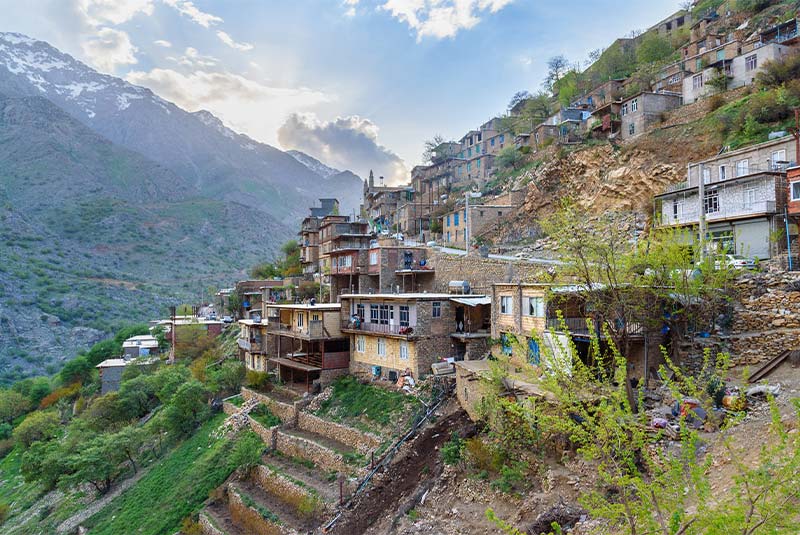
The Hawrami people are an agropastoral Kurdish group that has lived in the area since about 3000 BCE, and their traditional culture is evident in the area's isolated and hilly geography. The property consists of two parts: the Central-Eastern Valley (Zhaverud and Takht, in Kurdistan Province), which is located at the center of the Zagros Mountains, and the Western Valley, which is located along Iran's western border in the provinces of Kermanshah and Kurdistan (Lahun, in Kermanshah Province).
Human settlement has evolved over millennia in these two valleys to fit the challenging mountainous environment. The Hawrami people, semi-nomadic and inhabit the lowlands and highlands at various times of the year, are known for their tier-based steep-slope design and construction, dry-stone terrace gardening, livestock raising, and seasonal vertical movement.
Stone tools, caves and rock shelters, mounds, traces of former permanent and transient habitation sites, workshops, cemeteries, roads, villages, castles, and more are proof of their continued existence in the landscape, which is also distinguished by exceptional bio-diversity and endemism. The property's 12 villages show how the Hawrami people have changed throughout the centuries in response to the lack of arable land in their mountainous environment.
| Complete Article: Hawraman - Cultural Landscape of the Kurdish Lands
26. Trans-Iranian Railway (2021)
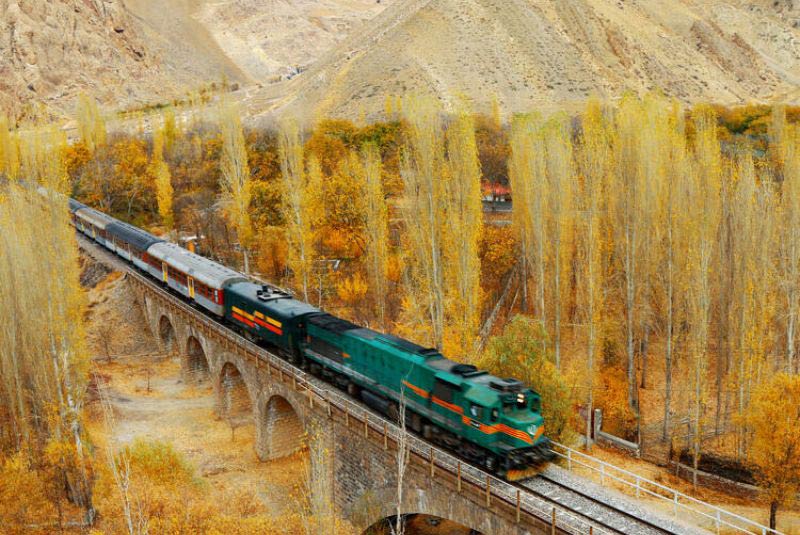
The 866-mile Trans-Iranian Railway, which connects the Persian Gulf's rich plains with the Caspian Sea's sparkling coastlines, is acclaimed as one of the most remarkable technical feats of the 20th century.
The 1,397-kilometer-long railway was successfully conceived and built in a partnership between the Iranian government and 45 construction companies from other nations that began in 1927 and ended in 1938. The achievement was made possible by more than 70,000 workers, detailed mapping, and aerial photography. It has been added to the Iran UNESCO World Heritage list.
The railway is renowned for its size and the technical feats needed to overcome obstacles like steep terrain and other challenges. Its development required substantial mountain cutting in specific locations, while the complex landscape in others required the building of 175 large bridges and 184 small bridges, and 225 tunnels, including 12 spiral tunnels.
The planned route would connect towering mountain ranges, steep gorges, salt deserts, old-growth forests, and plains while traversing four climates and posing a fantastic challenge to experts worldwide.
27. The Persian Caravanserai

Caravanserais, which were essentially wayfarers' inns located along trade routes, served as crucial rest stops that offered refuge, sustenance, and water for various travelers, including caravans, pilgrims, and other wanderers. The selection of their sites was determined by several factors, including the presence of water sources, geographical considerations, and security concerns.
It's important to note that the fifty-four caravanserais within this particular property represent just a fraction of the many caravanserais that once dotted the ancient roads of Iran. Nevertheless, these specific inns stand out as exceptional and invaluable examples within Iran, showcasing a rich diversity of architectural styles, adeptness in adapting to varying climatic conditions, and a wide array of construction materials. Spanning thousands of kilometers and constructed over the course of numerous centuries, these caravanserais collectively offer a remarkable glimpse into the evolution and interconnected network of such waystations in different historical periods throughout Iran.
Bottom Line
Only a tiny portion of the Persian monuments on this extensive list is the Iran UNESCO World Heritage Sites discussed in this post. Undoubtedly, several different historical places in Iran merit inclusion on the UNESCO list of Iran heritage foundations.
The world is introduced to Iran's remarkable historical and natural capabilities via its abundant natural resources, four seasons, and the historical location of its oldest civilizations. Iran has always been among the top countries on the UNESCO list and has the tenth-highest global work registration rate.
Share your story!
Comment below and let us know about your Experience.
Your story inspires others!


Comment
Leave a Comment